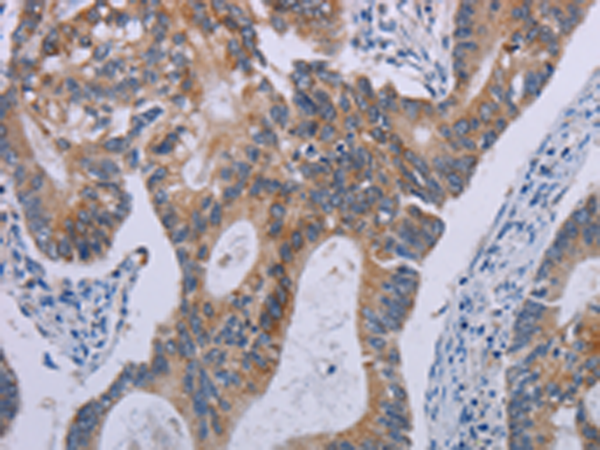

| WB | 咨询技术 | Human,Mouse,Rat |
| IF | 咨询技术 | Human,Mouse,Rat |
| IHC | 1/25-1/100 | Human,Mouse,Rat |
| ICC | 技术咨询 | Human,Mouse,Rat |
| FCM | 咨询技术 | Human,Mouse,Rat |
| Elisa | 1/1000-1/2000 | Human,Mouse,Rat |
| Aliases | PAR3; PAR-3 |
| Host/Isotype | Rabbit IgG |
| Antibody Type | Primary antibody |
| Storage | Store at 4°C short term. Aliquot and store at -20°C long term. Avoid freeze/thaw cycles. |
| Species Reactivity | Human |
| Immunogen | Synthetic peptide of human F2RL2 |
| Formulation | Purified antibody in PBS with 0.05% sodium azide and 50% glycerol. |
+ +
以下是关于F2RL2(PAR4)抗体的3篇参考文献,按文献名称、作者和摘要内容概括整理:
1. **文献名称**:*Protease-activated receptor 4 (PAR4) antagonists as novel antiplatelet agents*
**作者**:Wilson SJ, et al.
**摘要**:该研究开发了针对PAR4(F2RL2编码)的特异性拮抗性抗体,验证其在体外抑制血小板活化的效果,为抗血栓治疗提供了新策略。
2. **文献名称**:*Expression and functional characterization of PAR4 in human vascular endothelial cells*
**作者**:Zhang L, et al.
**摘要**:作者利用F2RL2抗体通过免疫荧光和流式细胞术检测PAR4在内皮细胞的表达,证实其参与炎症信号通路的调控,并影响血管通透性。
3. **文献名称**:*A monoclonal antibody targeting PAR4 inhibits pancreatic cancer cell invasion*
**作者**:Chen H, et al.
**摘要**:研究团队开发了一种针对PAR4的单克隆抗体,发现其能特异性阻断肿瘤细胞迁移和侵袭,提示PAR4抗体在癌症治疗中的潜在应用价值。
*注:F2RL2基因编码蛋白酶激活受体PAR4.相关抗体研究多集中于凝血、炎症和肿瘤领域。建议通过PubMed或Web of Science平台结合具体实验需求筛选更匹配的文献。*
The F2RL2 antibody targets the protein encoded by the **F2RL2 gene**, also known as **Protease-Activated Receptor 3 (PAR3)**. PAR3 is a member of the protease-activated receptor (PAR) family, a group of G protein-coupled receptors (GPCRs) activated by proteolytic cleavage. PARs play critical roles in cellular signaling, particularly in processes like coagulation, inflammation, and tissue repair. PAR3 is primarily expressed in platelets, endothelial cells, and certain epithelial tissues, where it interacts with thrombin and other serine proteases to mediate cellular responses.
F2RL2 antibodies are essential tools for studying PAR3's function in both physiological and pathological contexts. They are widely used in techniques such as Western blotting, immunohistochemistry (IHC), and flow cytometry to detect PAR3 expression, localization, and activation. Research has linked PAR3 to thrombotic disorders, cancer progression, and inflammatory diseases due to its role in regulating cell adhesion, proliferation, and apoptosis. For example, PAR3 overexpression in tumors has been associated with metastasis and poor prognosis.
These antibodies are often developed in rabbit or mouse hosts, with monoclonal and polyclonal variants available. Validation includes specificity testing via knockout cell lines or siRNA knockdown. Researchers also utilize F2RL2 antibodies to explore PAR3 crosstalk with other PAR family members (e.g., PAR1 and PAR4), shedding light on complex signaling networks. Understanding PAR3 biology through these antibodies holds therapeutic potential, particularly in targeting thrombosis or cancer pathways.
×